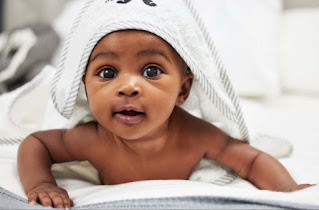Infants aged just 4 months old who live in a home where two languages are spoken have distinct patterns of brain activation compared with infants living in monolingual environments
 |
| Our early experiences and exposures can shape the rest of our lives (Credit: PeopleImages / Getty Images) |
Babies as young as 4 months old who are born into a bilingual environment show distinct brain patterns related to how they process speech. The findings emphasise how language exposure shapes the brain during early life.
Our early-life experiences are known to influence our neural pathways and can have lifelong effects on our behaviour. The brain is most sensitive to its environment during the first year of life, which is thought to be a critical period for language development.
Previous studies have shown that babies who hear just one language can distinguish between people speaking their mother tongue and unfamiliar languages at only 3-and-a-half months old, suggesting that they are already adapting to language exposure. But few studies have looked into the brain mechanisms that underlie bilingual speech-processing in infants.
To learn more, Borja Blanco at the University of Cambridge and his colleagues compared how 31 babies who only heard Spanish and 26 babies who heard both Spanish and Basque, all aged 4 months, responded to Spanish recordings of The Little Prince by Antoine de Saint-Exupéry.
The team monitored the infants’ brains via an imaging technique called functional near-infrared spectroscopy, which measures changes in cerebral blood flow to indicate the areas of the brain being activated.
In the Spanish-only babies, the recordings elicited activity in areas of the left frontal and temporal lobes, which are known to play a role in speech-processing. In the bilingual-exposed babies, the recordings similarly evoked responses in these areas, but they were larger and wider. These infants also had activation in the equivalent areas of their brains’ right hemispheres.
In another part of the experiment, where the same recordings were played backwards, the two groups of infants also responded differently. While the infants exposed to both Spanish and Basque showed similar brain activation patterns for the backwards and forwards recordings, those who were only exposed to Spanish exhibited larger responses to the backwards speech.
This may be because the former infants take longer to adapt to their primary language, in this case Spanish, as hearing both this and Basque reduces their overall exposure to either language.
This could be advantageous by helping the infants be sensitive to linguistic differences and by enabling them to learn to tell two languages apart at a younger age. Utilising both sides of the brain for language may explain why left-handed people, who have more bilateral distribution for certain brain functions, often have better speech outcomes after a stroke.
Alternatively, infants exposed to only one language may find unfamiliar sounds more novel and therefore pay them more interest.
Writing in their paper, the researchers say their study provides evidence that a bilingual environment induces changes in the brain mechanisms underlying speech-processing in young infants, adding weight to the idea that the neural basis of learning two or more languages is established very early in life.
“This is interesting because it tells us that left hemisphere lateralisation for language is the product of development and is strongly influenced by language experience,” says Evelyne Mercure at Goldsmiths, University of London. “A more diverse language environment that includes more than one language leads to more widespread and bilateral activation.”
Reference:
bioRxiv DOI: 10.1101/2024.01.26.577342
